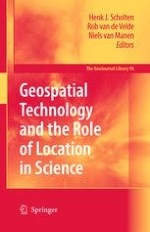2009 | OriginalPaper | Buchkapitel
5. Past in Place: The Role of Geo-ICT in Present-day Archaeology
verfasst von : Alfred J. Wagtendonk, Philip Verhagen, Steven Soetens, Karen Jeneson, Maurice de Kleijn
Erschienen in: Geospatial Technology and the Role of Location in Science
Verlag: Springer Netherlands
Aktivieren Sie unsere intelligente Suche, um passende Fachinhalte oder Patente zu finden.
Wählen Sie Textabschnitte aus um mit Künstlicher Intelligenz passenden Patente zu finden. powered by
Markieren Sie Textabschnitte, um KI-gestützt weitere passende Inhalte zu finden. powered by
